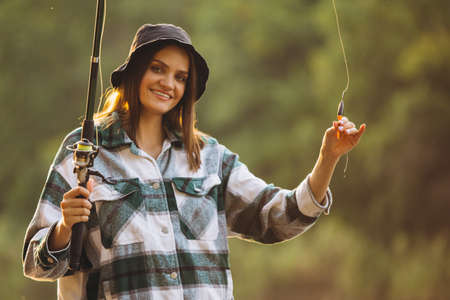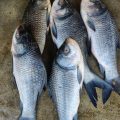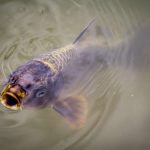Introduction to Water Temperature and Fish Behavior
When it comes to fishing for crappie and panfish, understanding the role of water temperature is key to having a successful day on the water. Water temperature isn’t just a number—it actually shapes the way these fish behave, feed, and even where they hang out. In lakes and ponds across the United States, crappie and other panfish are especially sensitive to seasonal changes. As spring turns into summer or fall shifts toward winter, the temperature of the water changes, and so does the activity level of your favorite fish. If you’ve ever wondered why your go-to fishing spot is packed with fish in April but seems empty in July, water temperature is often the answer. In this article, we’ll explore why water temperature matters so much for crappie and panfish, and how each season brings its own patterns that can help or hinder your next family fishing adventure.
2. Cool Water: Early Spring and Late Fall Activity
If you’ve ever taken your kids fishing on a crisp early spring morning or a brisk late fall afternoon, you know the chill in the air can be both invigorating and challenging. During these cooler months, crappie and other panfish behave quite differently compared to their summer patterns. I remember bundling up with my son last March, thermos in hand, ready to see if the fish were biting. What we quickly learned is that cool water means slow fish! When water temperatures drop—typically below 55°F (about 13°C)—crappie and panfish become sluggish and conserve their energy. They’re not chasing after fast-moving lures or darting around the shallows like they do in warmer weather. Instead, they tend to stick close to deeper structures where the temperature is more stable.
We found our best luck fishing near submerged logs and brush piles. The fish were tight to cover, barely moving unless a bait drifted right in front of them. My daughter loved peering into the clear water, spotting crappie almost frozen in place under a fallen tree limb. Here’s a quick guide based on our experiences for targeting panfish when the water’s cool:
| Water Temp (°F) | Panfish Behavior | Best Fishing Spots |
|---|---|---|
| 40–50 | Very sluggish, minimal movement | Deep holes, around brush piles or sunken logs |
| 51–55 | Slow but slightly more active; short feeding windows | Edges of drop-offs, deeper coves with structure |
If you’re out with your family during these chilly times, patience is key. Use smaller baits and slower presentations—think tiny jigs or live minnows fished almost motionless. Encourage your kids to watch closely because bites can be gentle tugs rather than sharp strikes. These cool-water trips have become some of our favorite memories; the quietness of the lake and the shared excitement when we finally hook a big one are priceless!
![]()
3. Warming Up: The Magic of Pre-Spawn Temperatures
As spring rolls in and the water begins to warm, crappie and other panfish start to wake up from their winter slowdown. This period, often called the pre-spawn, is one of the most exciting times for family fishing adventures. When temperatures hit around 55-65°F, these fish become much more active, feeding aggressively in preparation for spawning. If youre out on the lake with your kids, this is the moment you want to watch for! You’ll notice schools of panfish moving from deeper waters toward shallow bays and coves. Look for signs like surface ripples, jumping minnows, or birds diving near the water—these are clues that panfish are gathering close to shore. For young anglers, this means more bites and faster action, making it a perfect teaching opportunity. Encourage your kids to observe these natural changes and guess where the fish might be hiding next. Not only does this spark curiosity and excitement, but it also turns every fishing trip into an interactive learning experience about how nature’s rhythms affect our favorite catches.
4. Peak Comfort Zone: Summer Patterns and Hot Weather
As summer temperatures soar, both crappie and panfish enter their peak comfort zone—but their behaviors shift dramatically in response to the heat. During hot months, water temperature often rises above 75°F (24°C), prompting these fish to seek cooler, oxygen-rich areas. Understanding their warm-weather habits can turn a family fishing outing from slow to sensational.
Warm-Water Behaviors of Crappie and Panfish
In the heat of summer, crappie and panfish typically move deeper during midday when surface temperatures are at their highest. Early morning and late evening become prime feeding times as fish venture into shallower waters where insects and baitfish are more active. Here’s a quick look at how water temperature influences their location and behavior:
| Time of Day | Likely Location | Behavior |
|---|---|---|
| Early Morning | Shallow edges, weed beds | Active feeding, surface strikes |
| Midday | Deeper drop-offs, shaded areas | Lethargic, seeking cool refuge |
| Evening | Moving back to shallows | Renewed activity, chasing baitfish |
How Fish React to Hot Weather Conditions
Panfish like bluegill and perch often form tight schools in deeper water or around structure such as submerged logs or docks. Crappie may suspend just off the bottom or gather near brush piles. Both species are sensitive to low oxygen levels—especially after a string of hot days—so they gravitate toward areas with fresh inflow or aquatic vegetation that produces oxygen.
Family-Friendly Tips for Finding Active Bites
- Fish Early or Late: Plan your family outings around sunrise or sunset for the best chance at active bites.
- Target Structure: Focus on fishing near docks, fallen trees, or weed lines where fish find both cover and food.
- Use Light Tackle: Lighter lines and smaller hooks mimic natural prey and entice finicky summer fish.
- Bring Shade: For comfort and safety during hot weather, pack hats, sunscreen, and plenty of water for everyone.
- Try Live Bait: Worms or minnows are irresistible to panfish in warm conditions—let the kids help with baiting hooks for extra fun!
The Takeaway for Summer Family Fishing Adventures
By tuning into how crappie and panfish respond to rising water temperatures, families can maximize their time on the water. Remember, patience pays off—and sharing those early morning catches or watching the sun set together is all part of the summertime adventure!
5. Gear and Tactics for Different Temperatures
When it comes to fishing for crappie and panfish, choosing the right gear and tactics based on water temperature can make all the difference—and it’s something families can easily enjoy together! Here are some of my favorite tips and tricks, learned from weekends on the water with my own kids, that will help you adapt to changing conditions without making things complicated or expensive.
Early Spring: Cold Water (<60°F)
In chilly water, crappie and panfish move slowly, so finesse is key. My family loves using small jigs tipped with live minnows or soft plastics in natural colors. Try a slip bobber rig—it’s easy for kids to cast and keeps bait at the perfect depth. We’ve found that vertical jigging near brush piles or submerged trees works wonders when fish are sluggish.
Late Spring to Early Summer: Warming Up (60–75°F)
As the water warms up, fish get more active and start feeding aggressively. This is prime time for lightweight spinning rods and 1/16 oz jig heads paired with curly tail grubs or tubes in brighter colors like chartreuse or white. My son loves casting and slow-retrieving along the shorelines—sometimes we even have friendly competitions to see who catches the first bluegill! Don’t forget to try small spinners or beetle spins; they’re exciting for kids because you can feel every bite.
Mid-Summer: Warm Water (>75°F)
When summer heats up, panfish often move deeper or hide under docks and lily pads. We switch to drop-shot rigs or use small crankbaits for covering more water quickly. Sometimes, dangling a worm beneath a bobber right in the shade brings instant action—perfect for younger anglers who want fast results!
Family-Friendly Tips
- Keep tackle simple—one small tackle box with assorted hooks, bobbers, jigs, and soft plastics is plenty.
- Let kids pick their own lure colors—they love being part of the decision-making process!
- If possible, bring a portable thermometer so everyone can guess the water temperature together and decide which technique to try.
Sharing Success
The best part about adapting your gear and tactics as a family is celebrating those little victories together. Whether it’s your child landing their first crappie on a hand-picked lure or laughing over a missed bite, these shared experiences make every fishing trip special. So next time you head out, try mixing up your approach based on what the thermometer says—you might be surprised how much more fun (and successful) your day becomes!
Family Fun: Encouraging Curiosity and Fish Conservation
Fishing is more than just catching crappie or panfish—it’s about building memories and learning together as a family. When you head out to the lake or pond, water temperature isn’t just a detail for finding fish; it’s a great opportunity to spark curiosity in kids and adults alike. Turn each trip into a science adventure by talking about how warm or cool water affects where fish swim, what they eat, and how active they are. Bring along a simple thermometer and let your kids help measure the water temperature. Encourage them to make predictions about where the fish might be hiding on hot summer days versus chilly mornings. This hands-on approach helps everyone appreciate the connection between nature and animal behavior.
Making Observations Together
Ask questions like, “Why do you think the fish are closer to shore today?” or “How does the weather change the way fish act?” You can even keep a family fishing journal, noting down water temperatures, weather conditions, and which fish you catch. Over time, these observations help children—and grown-ups—notice patterns and feel more connected to the environment. It’s a wonderful way to blend fun with learning, making each fishing trip a mini science experiment.
Promoting Conservation Mindsets
Respect for nature starts with understanding. Talk about why it’s important to release smaller fish or limit your catch so future generations can enjoy fishing too. Show how gentle handling helps fish survive after being released, especially when water temperatures are higher and stress can be greater for the fish. Discuss local rules and why they matter for keeping lakes healthy.
Building Lifelong Habits
By weaving curiosity and conservation into every outing, you’re teaching values that last a lifetime. Celebrate each discovery—whether it’s spotting minnows near the shore or watching birds hunt for insects—and remind your kids that responsible fishing means giving back to nature. These shared experiences not only create lasting family traditions but also foster respect for wildlife and our waterways.


